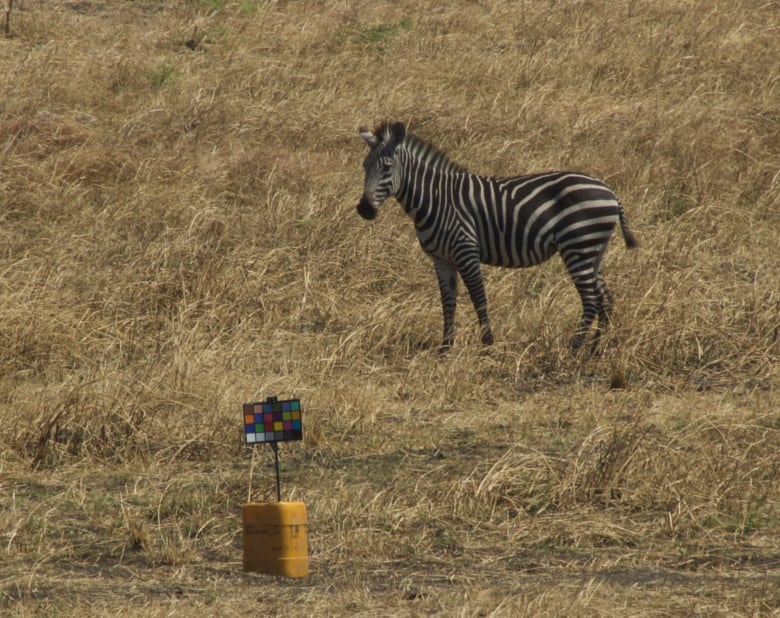Zebra stripes not camouflage, University of Calgary study finds
Researchers rule out centuries-old camouflage theory

It's a question that has been debated since the time of Darwin, and now a Calgary researcher is one step closer to answering the age old puzzle: "Why do zebras have stripes?"
Contrary to popular belief, zebra stripes are not for camouflage, a University of Calgary study has found.
"The real problem is that we're always looking at zebras through human eyes," says the study's lead author Amanda Melin, an assistant professor of anthropology at the University of Calgary.
Unlike humans, animals don't see very well — including lions, hyenas and other zebra predators.
"Knowing that most mammals have pretty poor visual acuity, I thought 'I bet they can't even see these stripes very far, especially at night'," Melin told CBC News.
And since animals can't see the stripes, predators have probably already heard or smelled their zebra prey before they catch sight of them, thus ruling out any camouflage protection.
Melin conducted the study with University of California, Davis professor Tim Caro, who has spent his entire career studying zebra stripes.
The study's findings were published in the journal Plos One on Friday.
Instead of camouflage, Caro believes the stripes are there to deter "pesky, parasitic" flies, which are natural pests of zebras.
Scientists believe it has something to do with the polarization of light, which is off-putting for the flies.
In a paper called The function of zebra stripes, Caro� found striped animals were more common in areas with biting flies.
Through animal eyes
To test the hypothesis that stripes camouflage zebras against the backdrop of their natural environment, the researchers passed digital images taken in the field in Tanzania through spatial and color filters that simulated how the zebras would appear to their main predators — lions and spotted hyenas — as well as to other zebras.
They also measured the stripes' widths and light contrast, or luminance, in order to estimate the maximum distance from which lions, spotted hyenas and zebras could detect stripes.
They found that beyond 50 metres in daylight or 30 metres at twilight, when most predators hunt, stripes can be seen by humans but are hard for zebra predators to distinguish.
On moonless nights, the stripes are particularly difficult for all species to distinguish beyond nine meters.
This suggests that the stripes don't provide camouflage in woodland areas, where it had earlier been theorised that black stripes mimicked tree trunks and white stripes blended in with shafts of light through the trees, the study said.
